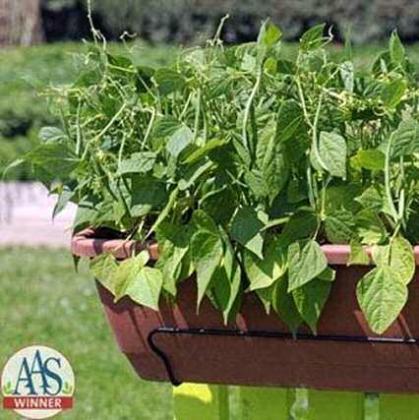If you want to have a success in your garden then plant some green beans. They don’t take much space and you get a lot of beans from a small plot. This isn’t the right time to plant but is the right time to eat beans from the store or farmer’s market and think about planting them next year.
The broad bean has been found in Iron age settlements but the green bean and many other beans goes back to Peru. They spread throughout the Americas by migrating native people. In many countries the beans continue to play a large role in their diet. The Spanish explorers took the bean back to Europe in the 16th century.
There are two basic growth habits for green beans (also called Snap beans or String beans): Pole varieties grow long vines that may reach 10 to 15 feet and require a trellis or staking. They also produce beans over a longer time. Bush beans grow compactly about two feet tall and produce all of their beans in two to three weeks. Their small size makes them ideal for container gardening. Most are green but there are purple, red, yellow, and streaked beans. They are either round or flattened in shape. Most are 5 to 7 inches long but some are a foot or a yard long.
When you have decided on what kind of bean to plant, you will need to decide where to put them. Pole beans can be planted in a row with a trellis type of support for them or in a tepee arrangement with a pole in the middle and strings from the top anchored to the ground where you will plant the seeds. Place your support before you plant the beans so you don’t disturb roots and can plant the seed where your string meets the ground. Bush beans can be planted in rows or containers.
Select a site that has sun most of the day. If you planted beans before, rotate your site (it keeps down diseases). If you haven’t grown beans in this spot, use a Rhizobium inoculant to increase yield. Plant the seed directly into the garden as they don’t like their roots disturbed. Wait to plant until the soil is warm to the touch and all danger of frost is past and there is a forecast for warm weather the next 5 days. If bean seeds sit in cold soil to many days they will rot. The soil should be enriched with compost but not manure. Plant seeds 1” deep and by the string or trellis for pole beans. Bush beans are planted 1” deep and 2 to 4 inches apart in rows 2 ½ to 3 feet apart or plant them in a container. Keep the soil moist especially after flowering and during bean development. This prevents blossom drop and small bean size. Putting a mulch around the plants can keep plants from drying out. Avoid high nitrogen fertilizer. Bush beans produce so quickly fertilizer may not be needed. Use a balanced nutrition fertilizer for pole beans 10-10-10, nitrogen-phosphoruspotassium.
Expect to harvest your beans in six to eight weeks. Pick your beans at about a regular pencil size and any length you like as long as the seeds inside the pod are not enlarging (beans are tougher). They can be eaten raw in salads, cooked as a side dish or soup, in a casserole, or pickled.
Edith Iwan is a Cibola- McKinley County Master Gardener who lives and works in Thoreau. As a Master Gardener she assists the County Cooperative Extension Service in providing accurate, research-based gardening information to county residents. If you have any gardening questions, please call the NMSU Cibola County Extension at 505-287-9266 or NMSU McKinley County Extension at 505-863-3432

